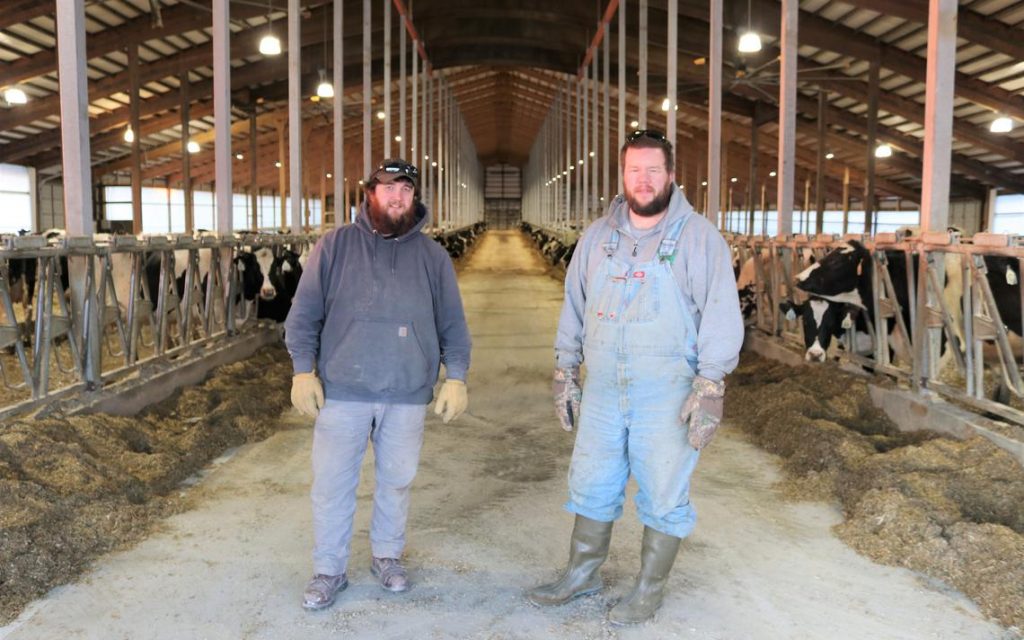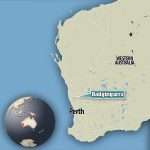
The Hoffman family will never forget the nightmare winter they had last year.
Brothers John and Corey Hoffman with their father, Gary, manage the 400-acre North-Creek Dairy farm in Chatfield, in southeastern Minnesota. It’s been in their family since 1903, when Gary’s grandfather started it.
But the fourth-generation farm family was forced to sell its cows last winter after its barn roof collapsed under the weight of snow.
When a second section of roofing on the barn that housed all 450 of their cows collapsed in below-zero temperatures, the Hoffmans were pushed to sell their entire herd. Days before, the first section broke and killed more than 10 cows.
“These are great people, and today is tough for them,” said Brian Speltz, a milk quality and market specialist for S&S Dairy Systems on the day the Hoffmans sold their herd.
“Lifelong decisions are made in a matter of hours,” said Speltz. “And that’s what’s happened here.”
Better than ever
Speaking one year after the collapse, Corey Hoffman said it was absolutely the right decision to sell their herd, as two more sections of the roof collapsed after that day. But that didn’t make it any easier.
“A year ago was the first time in 116 years that a cow was not milked here,” said Hoffman. “So that was pretty heartbreaking.”
He said in the weeks and months that followed the chaotic and emotional day, the family had no idea what the future of farming looked like for them.
“To be honest, it was totally up to insurance,” he said. “But luckily insurance came through for us, and we settled up at the end of May.”
Hoffman said that construction started the first of July, and by Oct. 8 they started milking again. Now they are back to 450 cows on the farm.
The new barn is more climate controlled, said Hoffman, so the cows “are a lot happier and healthier” in all seasons.
“Our production is probably better — actually it is better than what it was before,” Hoffman said.
Now more prepared
Thom Petersen, commissioner of the Minnesota Department of Agriculture, said it was the beginning of March 2019 when the department started to get a wave of reports of disasters related to February blizzards.
“We immediately had concerns about milk not getting picked up from farms on time and then getting dumped,” said Petersen. “And then all of the barns collapsing and farmers losing cows and their buildings.”
Petersen said the department estimates there were more than 300 barn collapses in the state last winter.
“It was mostly dairy,” he said of the collapses. “But we had machine sheds, hog barns and poultry barns as well.”
The disastrous winter of 2019 “spurred quite a discussion,” said Petersen, about making sure insurance policies are up-to-date and having a plan to get snow off roofs in a timely manner.
He said a lot of farmers had builders come in and reinforce buildings and look for structural deficiencies in their buildings.
“I’m hopeful that a lot of farmers, for as painful as it was, it caused people to take a second look at things and make some decisions on that,” said Petersen.
Something the Hoffmans learned after the collapses was that there was no building code for ag buildings in Minnesota. The snow load on the building that collapsed was only rated around 20-pounds, said Hoffman, and the new building is about twice that.
“So we feel like we’re never going to have to worry about that again,” said Hoffman. “We doubled up everything, the support posts, beams are a lot heavier, and we’re better prepared.”
Swift response
Petersen said he was proud of how quickly the state reacted to help its farmers in crisis from the winter weather.
Shortly after most of the collapses took place, Petersen accompanied Minnesota Gov. Tim Walz, U.S. Sen. Tina Smith and other area legislators and ag officials to Rob and Katie Kreidermacher farm near Altura. The Kreidermachers lost 10 cows when the barn roof collapsed from heavy snow.
“Just being able to get the governor down there just a couple days later, and Sen. Smith,” he said. “And that the Legislature came together to help some of those farmers.”
The Minnesota Legislature approved expanding a zero-interest disaster loan program for farmers in a bill that unanimously passed the Senate on March 14, and then passed the House without opposition.
The bill, which added uninsured losses from the weight of snow, sleet or ice to the list of damages covered, broadened eligibility for the Disaster Loan Recovery Program which is part of the state’s Rural Finance Authority. Petersen said that most farmers had their buildings insured, but the program went to help those who didn’t.
According to the Minnesota Department of Ag, as of March 1, the bill helped 25 farms rebuild and dispersed $1.5 million in loans at zero interest.
“With the farm economy being as tough as it is, to be able to do that for 25 of the actively farming operations is a big deal,” Petersen said.
He said the department expects to add more to that list, as farmers still dealing with their insurance companies have until March of this year to access the funding.
“We do think for every farmer, especially dairy farmers, that we can help, it was an important program,” he said. “I’m glad we were able to offer something.”
Community support
Petersen said while making the drive to the Kreidermacher’s farm with his 13-year-old son, he remembers how bad the road and snow banks were. His other memory that stuck was seeing how much farm communities and neighbors were pitching in to help each other. It was a silver lining to the entire disaster situation, he said.
“The farmers had almost more tears in their eyes about that than they did the barn collapses,” Petersen said. “Just how much support they had from friends, family and neighbors.”
The Hoffmans felt that community support as well.
“We couldn’t have got through everything we did without the support of our friends, family and neighbors,” Hoffman said. “The day the second collapse happened and the cows needed to leave, my wife posted on Facebook we were looking for a home, and it was shared over 1,300 times.”
He said there were more than 40 trucks and trailers at their farm that day to haul cattle.
“Within five hours, everything was out of here and at a safe home,” said Hoffman.
Hoffman said without the local ag community, the steps to recover from the collapses like cleanup, construction and getting new animals to the farm couldn’t have been done.























